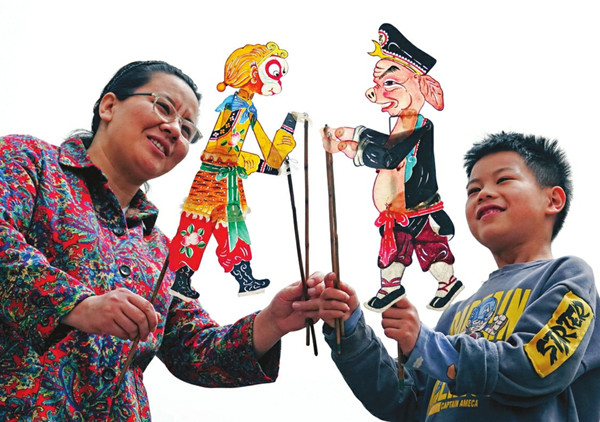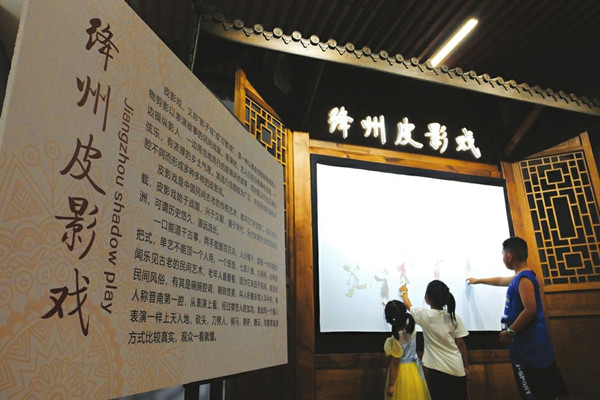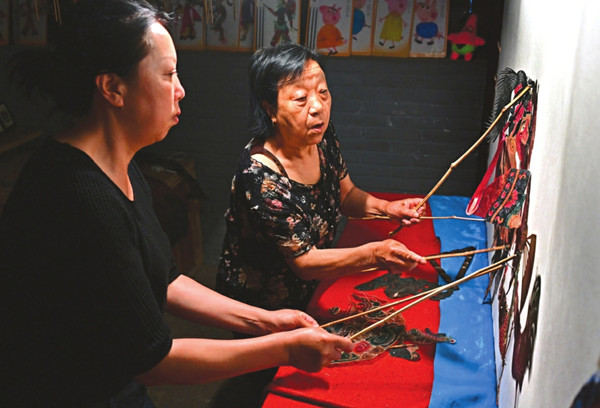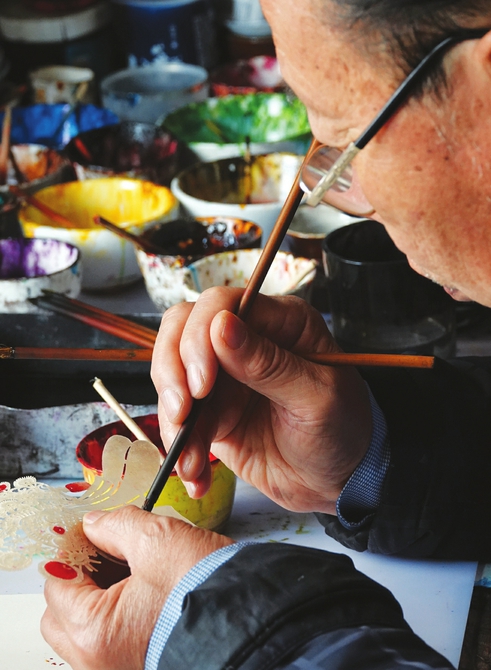Shanxi shadow plays

Zhao Cuiliang (left), a Houma shadow play artist, teaches her grandson her cherished art in the county-level city of Houma. [Photo/Shanxi Daily]
As a unique form of artistic expression combining folk arts and crafts with opera, Shanxi shadow plays began during the Warring States Period (475-221 BC) and flourished in the Qing Dynasty (1644-1911) in North China's Shanxi province.

Children watch a Jiangzhou shadow play in Xinjiang county, administered by Yuncheng city, Shanxi province. [Photo/Shanxi Daily]
The puppets used in Shanxi shadow plays are made from treated animal hides, which are processed using soaking, drafting, drawing, engraving, coloring and polishing.
The traditional entertainment, which is popular in Shanxi, is divided into the northern and southern schools.

Liu Jinlin (right), a Xiaoyi shadow play artist and her daughter put on a shadow play show for an audience. [Photo/Shanxi Daily]
The northern school, whose influence extends over Xiaoyi county-level city and Guangling county, features fine carvings and bright colors in its puppets and the performance stage has changed from paper screens to veil screens.
The southern school – whose influence extends over Houma county-level city, as well as Xinjiang and Quwo counties – is highlighted by the use of small and exquisite puppets with great ornamental quality.

Li Shiwei, a shadow play craftsman, decorates a carved puppet. [Photo/Shanxi Daily]



